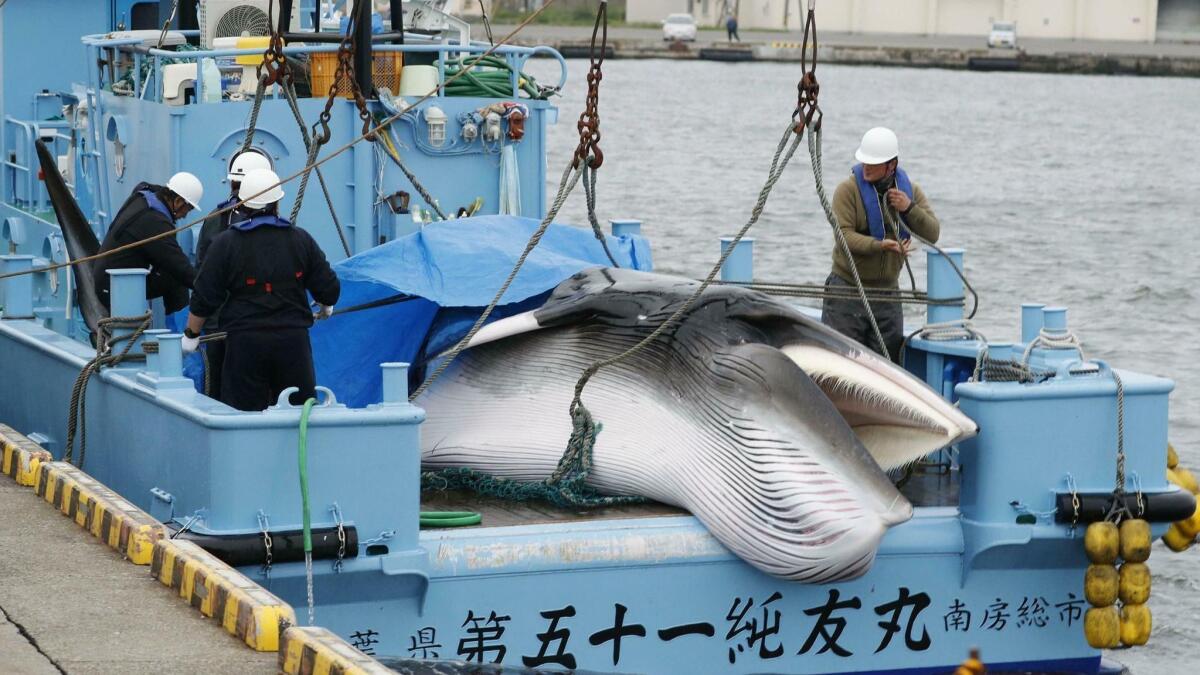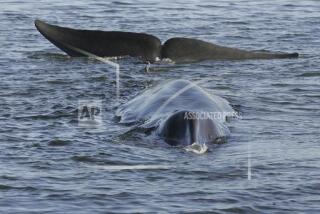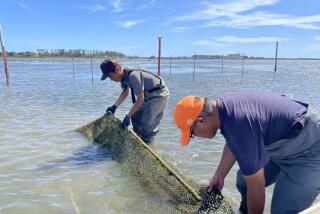Japan resumes commercial whaling despite low demand

- Share via
Reporting from TOKYO — Japan resumed commercial whaling Monday after 31 years, meeting a long-cherished goal of traditionalists that’s seen as a largely lost cause due to slowing demand for the meat and changing views on conservation.
Whaling boats embarked on their first commercial hunts since 1988, when Japan switched to so-called research whaling, but will stay within the country’s exclusive economic waters. Japan had given six-months notice that it was withdrawing from the International Whaling Commission, a move that went into effect Sunday.
The Fisheries Agency said the catch quota through the end of this year was set at 227 whales, fewer than the 333 Japan hunted in the Antarctic in recent years. The announcement of the quota for this season’s catch, originally planned for release in late June, was withheld until Monday in an apparent move to avoid criticism during this past weekend’s Group of 20 summit in Osaka.
As the boats left port, whalers, their families and local officials in two major whaling towns, Shimonoseki in southwestern Japan and Kushiro in the north, celebrated the fresh start, hoping for a safe return and a good catch. Shimonoseki is Prime Minister Shinzo Abe’s electoral constituency.
“We hope commercial whaling will be on track as soon as possible, contribute to local prosperity and carry on Japan’s rich whale culture to the next generation,” Deputy Chief Cabinet Secretary Yasutoshi Nishimura told reporters in Tokyo.
While the resumption of commercial whaling is condemned by many conservation groups, others see it as a face-saving way to let the government’s embattled and expensive whaling program gradually succumb to changing times and tastes.
Despite the massive attention and tax money and political support from ruling party lawmakers, whaling in Japan involved only a few hundred people and accounted for less than 0.1% of total meat consumption in fiscal 2017, according to the latest government data on food sufficiency.
Whale meat was an affordable source of protein during the lean times after World War II, with consumption peaking at 223,000 tons in 1962. But whale was quickly replaced by other meats. Whale meat supply was down to 6,000 tons in 1986, the year before the commercial whaling moratorium imposed by the International Whaling Commission banned hunting several whale species.
Under the research hunts, which were criticized as a cover for commercial hunts as the meat was sold on the market, Japan at its peak caught as many as 1,200 whales. It drastically cut back on its catch in recent years after international protests escalated and whale meat consumption slumped at home.
More to Read
Sign up for Essential California
The most important California stories and recommendations in your inbox every morning.
You may occasionally receive promotional content from the Los Angeles Times.










